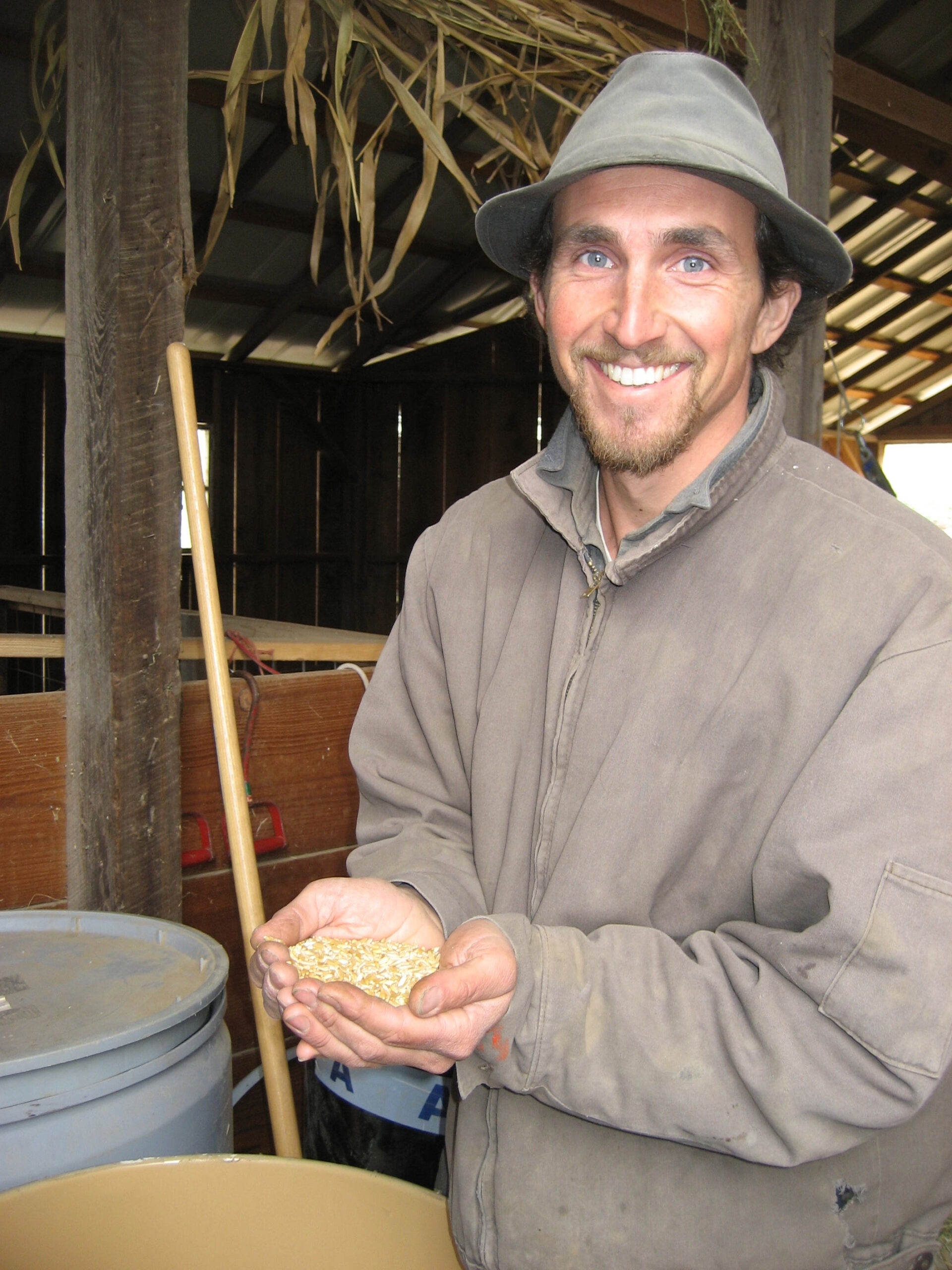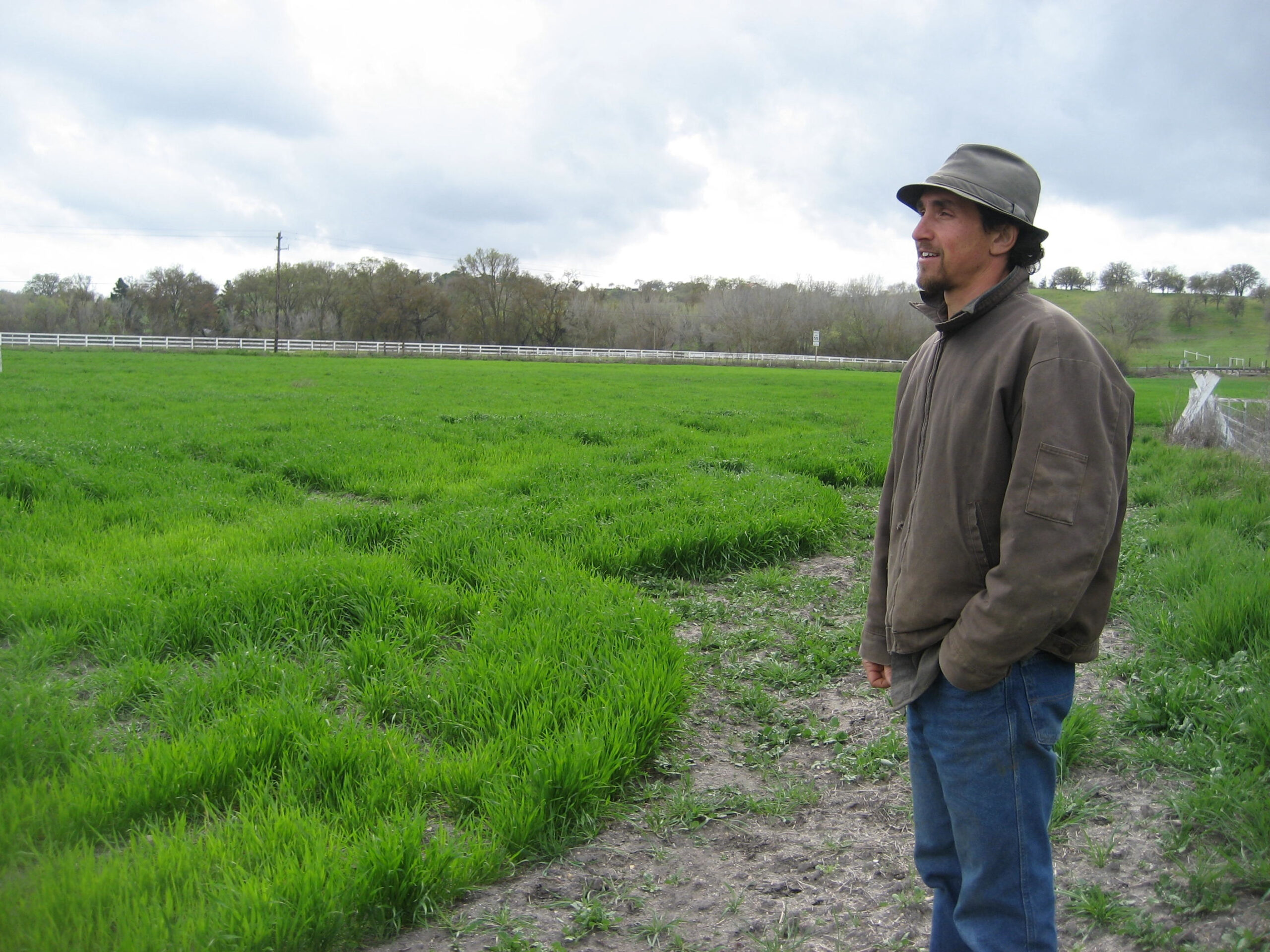Category 4
Category 3
Category 2
Category 1
We specialize in elevating content creators like you through bespoke social media strategies that not only capture attention, but also drive engagement.
Stride Social
Welcome to
I followed the rain clouds along the two-lane road leading to With the Grain farm. On a slope above the wheat fields was a small house, home to John DeRosier, his wife Leaf and teenage son Noah. Near the house stood a barn stripped of paint from decades of sun and rain. It was charming. John’s big dog, his only companion on most days, joined us.
Among the gentle slopes of Paso Robles, John’s farm is an anomaly. Lines of grapevines squeeze his farm from every direction. Neighboring vineyards rely on continuous sips from wells that act like big straws, slurping up water from the aquifer for irrigation. John’s well, dug 300 feet deep, maintains the same level as when it was drilled six decades earlier. Surrounding vineyards are drilling 1,000 feet beneath the surface to find water. Wells are being drilled deeper and deeper, a sign that water is being extracted faster than it is replenished.
The summers reach 110 degrees Fahrenheit. Rain was imminent on the spring day I visited, but this part of the valley receives an average of only six inches of water a year, mostly in the winter months. This is less rainfall than the desert city of Phoenix, Arizona. Rain-fed crops need annual rainfall of ten inches or more; and less, and ordinarily the wheat farmer must irrigate. A common choice is flood irrigation that turns rows of wheat into straight, shallow rivers. It’s the cheapest method of irrigation (as long as the price of water remains low), but it has the highest rate of water loss through runoff and evaporation.
“You don’t irrigate your crops even in the dry months?” I asked John.
“I don’t need to. You can come out onto my field in the summer and see dry, cracked topsoil, but just underneath the soil is moist. My soil retains hundreds of thousands of gallons of water when it rains.”
“But why are the farms around you using ground water? Why is your soil different?”
“Your answer starts with the cover crop.” He led me down a slope to his “dirt laboratory,” slender strips of land used to experiment with new grain varieties.
“This is where the elegance of the farm begins,” he smiled. We stood next to a patch of clumpy grass mixed with legumes and peas abloom with periwinkle-blue flowers.
“This is cover crop?” I asked as I pointed down at the grass.
“Yes. Grass is the most important thing we have going on, on our our planet.” He yanked out a chunk of grass, exposing its dangling strings of thin roots.
“Before the rain, I turn the cover crop, incorporating these root systems combined with the tap root of the legumes into the soil until it resembles chunks of chocolate cake.” My mind feasted on the idea of cake as he continued. “The rain water infiltrates into the soil where it’s held in the pores and roots.”
“Why don’t more farms grow cover crops?” I asked.
“Cover cropping requires more time and double the land. For example, my 200 acres are carved into plots. Half the plots are planted with grain and the other half with cover crop. Each plot is on a two-year cycle alternating between grain and cover crop.”
“So that means only 100 acres are producing grain at any given time?”
“Exactly. But remember that I can grow on land that other farmers consider unsuitable for farming because it has no water source.”
We moved to a large field that looked like a giant plate of chocolate cake. The soil was freshly turned earlier that morning in preparation for the rain. John squatted close to the ground and scooped the soil with his hand. Flecks of ground cover were sprinkled in it.
“This plot here is breaking down the cover crop. The roots are feeding the microorganisms in the soil.”
“Why is that important?”
“Microorganisms are bacteria in the soil. They work to convert nitrogen from the air into nitrogen the plant can use.” He continued, “Gazillions of these microorganisms lie underground in the humus.”
“What is humus?”
“Humus is soil rich with organic matter.”
Humus, I learned, is a complex structure that does not occur on all farms. It needs to be cultivated with patience and strategic planning. Humus retains more moisture than synthetic or even organic soils. A report published by Soil Science finds that humus has the water holding capacity of eighty to ninety percent of its weight, much higher than the average of twenty percent for organic soils.
(excerpt from Eat Less Water chapter Wheat and Water)
Leave a Reply Cancel reply
Ready to take Action?


click to Read & Leave a comment
Click to close comments
Comments